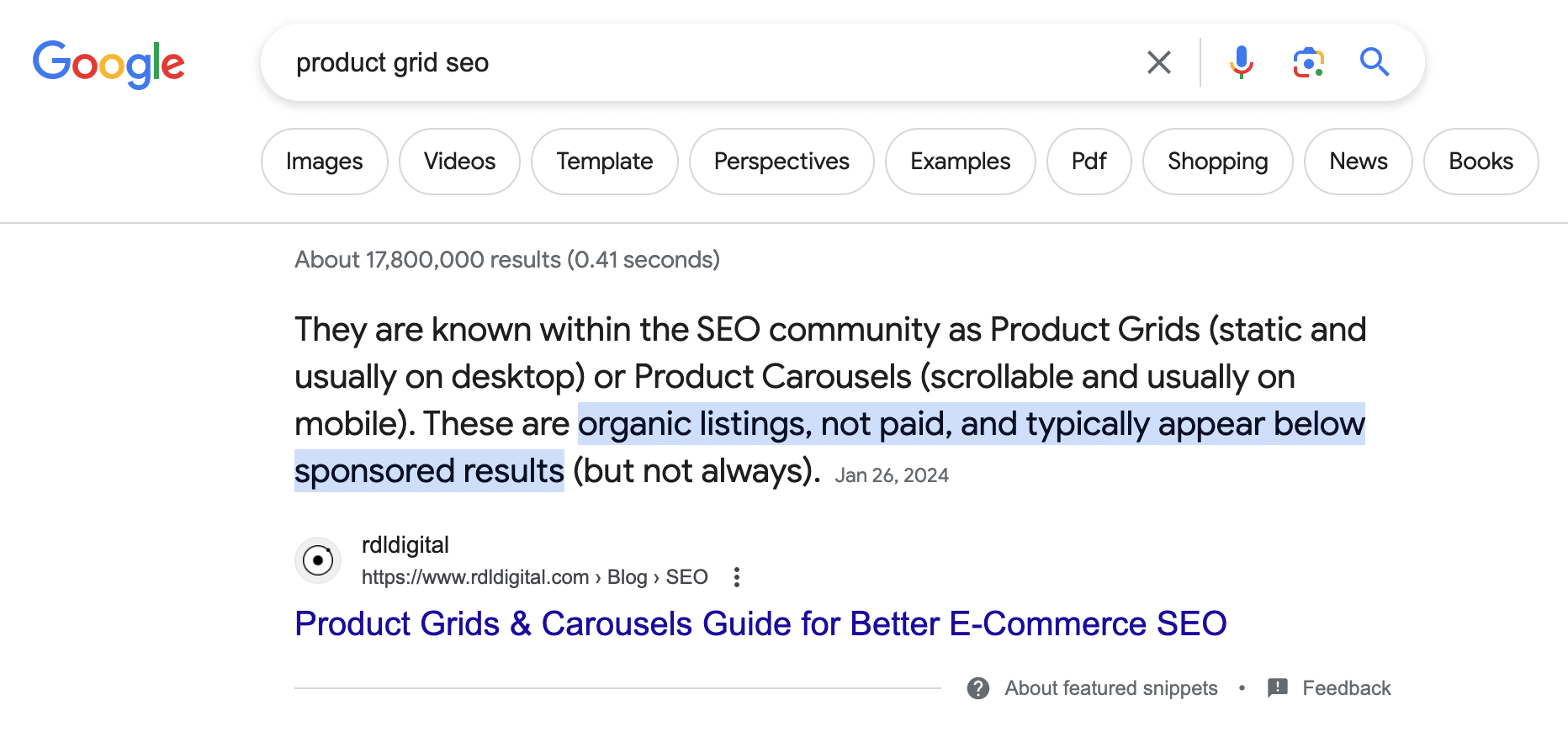In SEO, it’s easy to pursue already-known, clear-cut opportunities instead of considering “blue oceans.”
We all use the same SEO tools, see the same keywords. If you identify a keyword to target, you can be sure your competition notices it too.
You may still rank well if you have other popular content related to that topic, have more authority across the web, and create exceptional content aligning with search intent, but there’s far more to it than these factors.
The traditional SEO-led approach can work, but it shouldn’t be viewed as the single path toward organic search success.
Another way is applying SEO principles toward what your SMEs do already.
For example, I recently wrote a piece discussing SEO for Product Grids & Carousels. These keywords don’t show monthly search volume, so there were no rich features to aim for either. However, related keywords added up.

Regardless, the opportunity is there. The SEO community uses these phrases to describe category page-like features in Google search results.
By addressing this clearly, I earned a featured snippet, making some headway in a space with little competition but high value to e-commerce companies. It’s already generated quite a few clicks.
Applying SEO best practices throughout all content is vital. By being specific, writing in outline format, segmenting, linking wisely and applying many other tweaks for a better page, you maximize what your business already does best.
